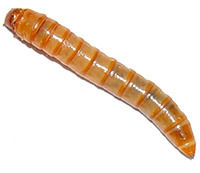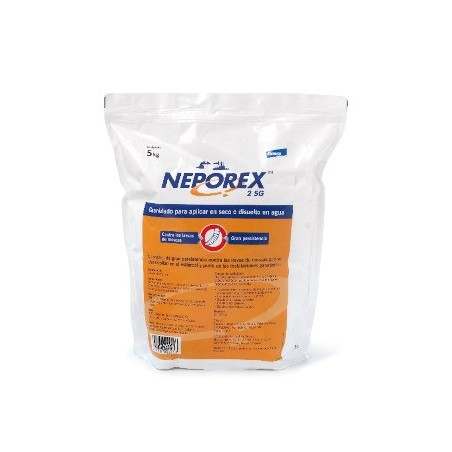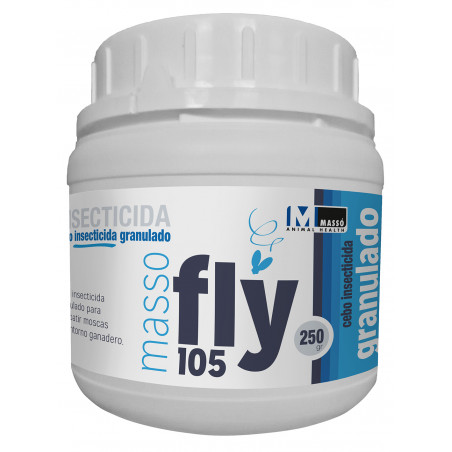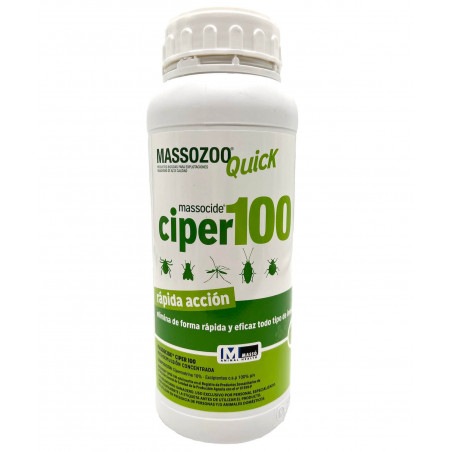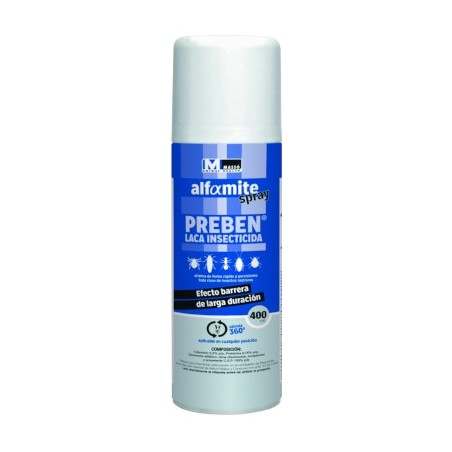Globalization in recent years in the animal feed industry has caused it to be dependent on certain raw materials that, in addition, are very sensitive to any speculative movement of the main global capital funds. Specifically in relation to protein sources, soybean meal has emerged as the undisputed benchmark, dictates the price behaviour for other products competing for protein percentage (mainly rapeseed and sunflower). In Europe (EU27), about 70% of protein raw materials are imported from third countries and only 0.4% of the Europe's arable land is used to produce soybeans. Furthermore, the sharp increase in demand for meat by the population expected in the world in the coming years, means that there is an active search for alternatives, both from a social and an environmental point of view.

Figure 1. Soybean production in the world
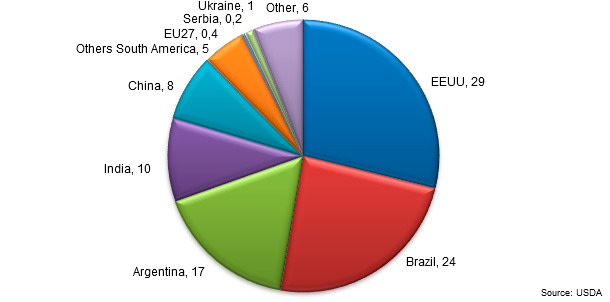
Alternatives
Crop reorientation
Bearing in mind that Europe is the world's leading producer of wheat and that it is in surplus, the first approach could lead to thinking about redirecting some of the land towards crops with a higher protein content such as legumes (peas, beans or chickpeas). Some European reports rule out this possibility: it would not be feasible because up to 40% of arable land would be required to achieve these goals, and also this type of production would cause additional problems (e.g. because of sensitivity to fungal diseases) by not allowing the land to rest. Since it would not be produced in Europe (where it is a very efficient crop), wheat would have to be produced in other less efficient countries —therefore needing more acres of land—, which would inevitably lead to a change in the inertia of the wheat trade.
Insects
Other alternatives with great potential, such as insects (like houseflies or larvae of other genera), are being considered. These have the advantage of being able to be produced quickly without excessively stringent requirements (not even power, because they are poikilothermic animals) on a substrate of organic matter without generating toxic waste and are, therefore, environmentally sustainable. Insects, as products, are rich in protein (adults) and fat (mostly larvae), and are commonly found in the natural omnivorous diet of both avian and swine. The use of insects has even been seen to significantly reduce environmental mineral pollutants from manure (e.g. reductions of 70% nitrogen, 50% phosphorous and 38 to 93% of other heavy metals in the case of the black fly —Newton et al., 2008). Furthermore, adding larvae to broiler diets has been observed to decrease E.coli and Salmonella counts in faeces (Erickson et al. 2004).
Table 1. Crude protein and crude fat in different protein sources.
| Protein source | Crude protein (%) | Crude fat (%) |
| Hermetia illucens (Black fly) | 35-57 | 35 |
| Musca domestica (Housefly) | 43-68 | 4-32 |
| Tenebrio molitor (Mealworm) | 44-69 | 23-47 |
| Fish meal | 61-77 | 11-17 |
| Soybean meal | 49-56 | 3 |
| (Veldkamp, 2012) |
From a nutritional point of view, protein digestibility is about 70-80%, and therefore very close to that of soybean meal. Some authors have created an Essential Amino Acid Index (EAAI) (Smith, 2010). Value interpretation depends on the requirements of the species to be fed: values close to 1 are closer to global amino acid requirements. Thus, as seen in the table, some insects enhance these values, even when compared to soybean meal.

Table 2. Essential Amino Acids Index.
| Mealworm | Lesser mealworm | Superworm | Housefly | Black soldier fly | Soyabean meal | |||
| larva | larva | larva | larva | pupa | larva | pre-pupa | - | |
| Growing pigs | 1,43 | 1,34 | 1,25 | 1,24 | 1,17 | 1,21 | 1,5 | 1,35 |
| Brolier | 1,39 | 1,29 | 1,21 | 1,19 | 1,1 | 1,17 | 1,43 | 1,31 |
Contrary to these sources, the disadvantages of using insects might include a risk at a microbiological safety level (insects may be harbouring pathogenic bacteria and viruses) and a toxicity level (some beetles produce toxic carcinogens as a defence tool, some others accumulate heavy metals in their bodies). In spite of everything, the addition of insects to cattle feed is not allowed, since they are considered to be animal protein. Another important factor from a legislative point of view is that there is no regulation on animal welfare, neither to describe what this concept represents at an insect level in the first place, nor to indicate what procedures would be considered appropriate for their slaughter.
|
|
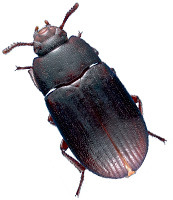 Alphitobius diaperinus Source: University of Florida, Entomology and Nematology department |
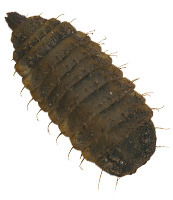 Hermetia illucens Source: Texas A&M Agrilife Extension |
Examples of mealworm larvae (Tenebrio molitor), lesser mealworm (Alphitobius diaperinus), black soldier fly (Hermetia illucens), and housefly (Musca domestica).
Algae
Algae, on the other hand, constitute another large group. There is already great interest in the cultivation of such products for biodiesel production, but we must not forget that they may contain around 25 to 50% protein (Becker, 2007; Mulder, 2010). For the time being, production is scarce, especially in the case of microalgae, but larger ones are already being produced on a large scale in some Asian countries as food for humans, and also for the production of alginates and other products. Similarly, the genus Lemna (duckweed) may be of particular interest, as it is rich in protein (up to 45%) depending on the amount of N and P in the environment it is grown. Its great advantage is its rapid growth, increasing its biomass by 50% every 48h (Nieuwenhuis and Maring, 2009; Derksen and Zwart, 2010; Zondervan, 2012), suggesting that it may be a relatively simple large-scale cultivation.

Single-cell proteins
Finally, and probably with an enormous efficiency potential, we have the group of single-cell proteins, highly heterogeneous and controversy-generating, which may include some species of algae already mentioned. Some yeasts and bacteria have the potential to generate protein from substrates that otherwise could not be used, such as wastewater. This capability can be, for example, 10,000 times more efficient than that of the soybean plant in terms of time required to generate biomass. There is obviously a risk derived from the presence of heavy metals, mycotoxins or possible carcinogenic metabolites, although some patented products already guarantee the non-presence of these elements. More usually, proteins obtained from yeasts used in the alcohol industry (Saccharomyces sp.) are currently used in pig feed, with crude protein values close to 45%, and high contents of amino acids lysine and threonine.
Conclusions
Research and exploration in search of alternative proteins for animal feed should be carried out in the most innovative and diversified way possible in order to decrease the current dependency on common raw materials and to promote sustainability in a continuously growing world.



